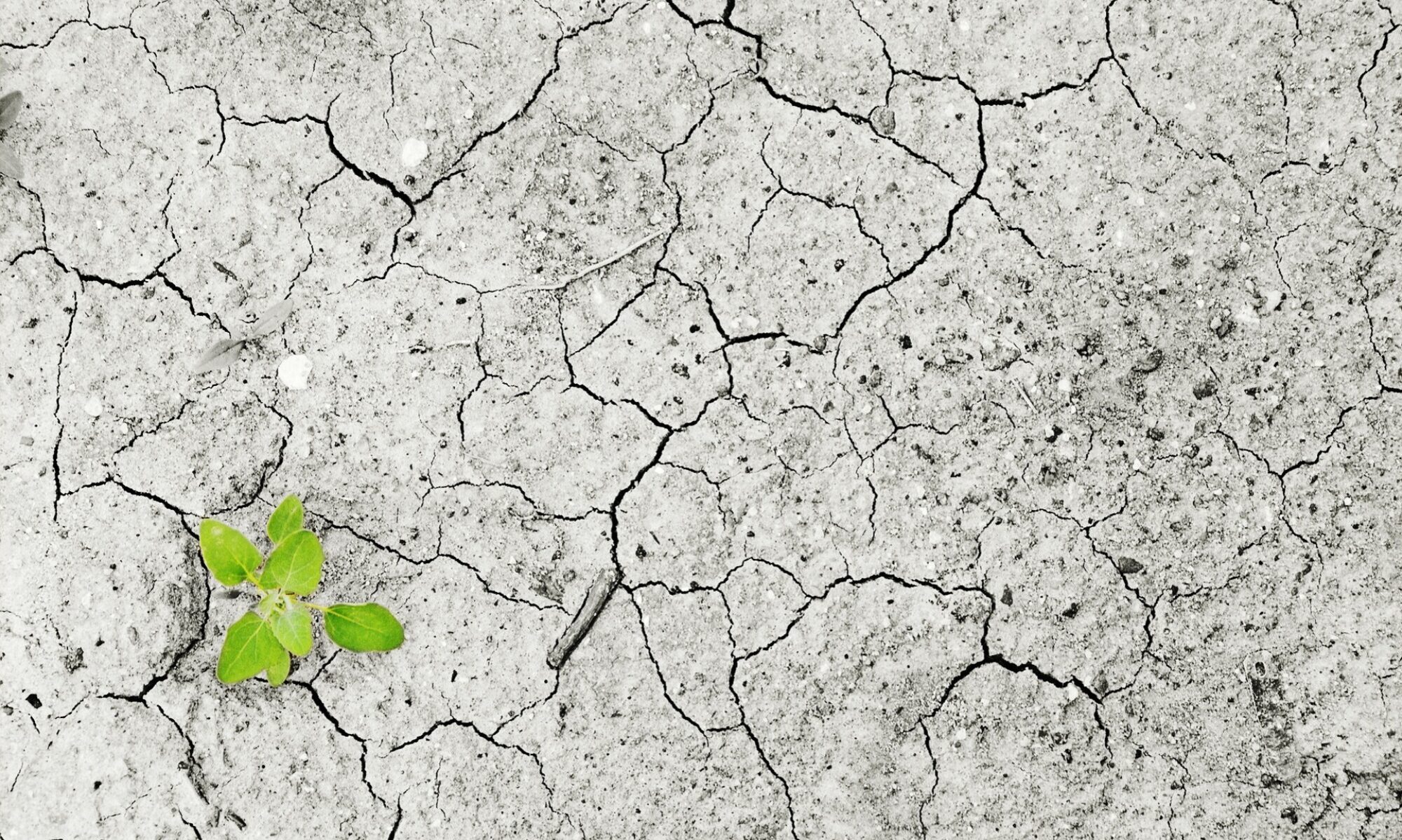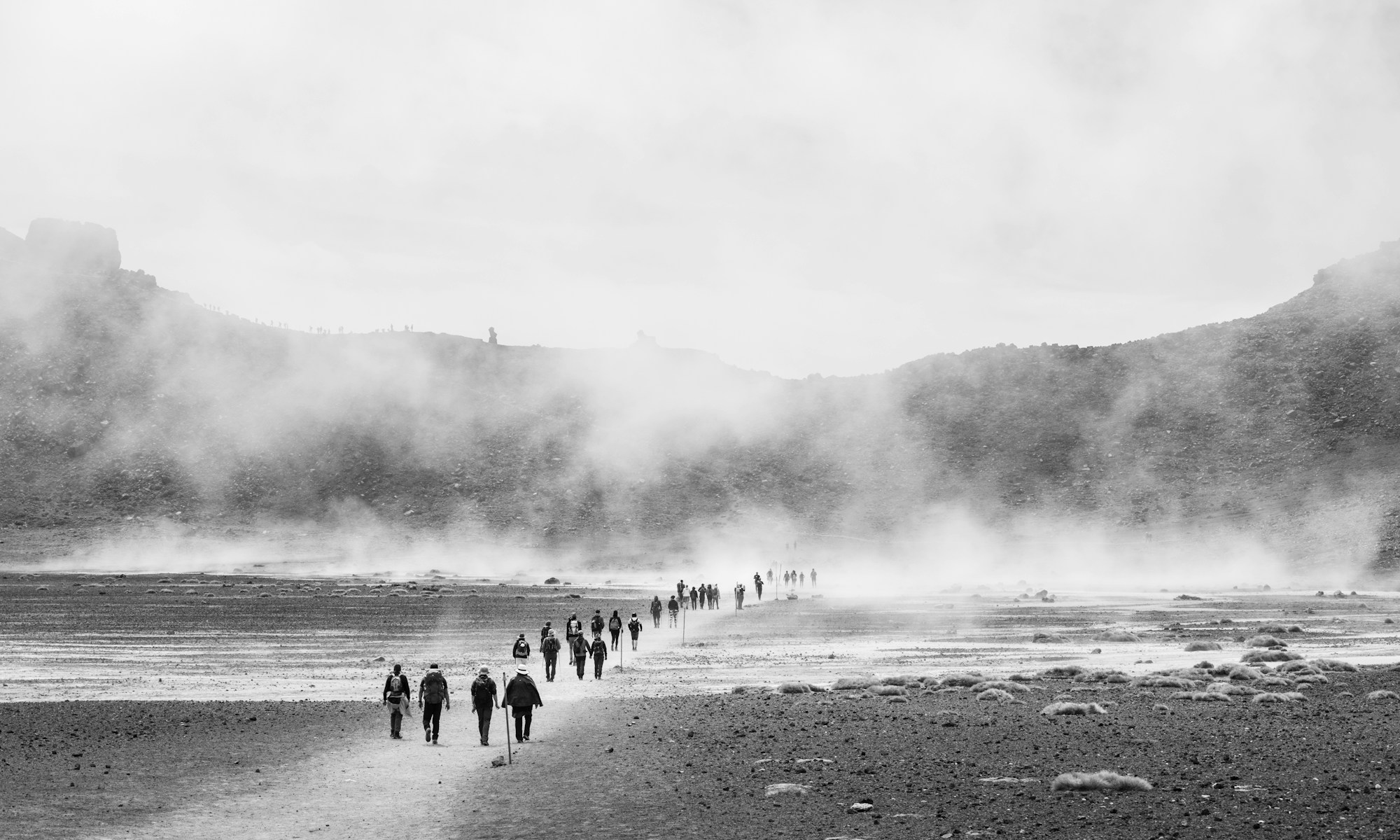7 January 2021 – by Anxhela Mile
I. Introduction
‘Climate refugees fall through the cracks of asylum law’
International Organization for Migration [1]
There are currently no legal protections for ‘climate refugees.’ Additionally, a debate exists on whether to characterize those displaced by environmental degradation, climate change, and natural disasters as ‘climate refugees’ or ‘climate migrants.’ This paper assesses the law on refugees and addresses the legal protection gap as climate migrants are not a recognized category under international law.[2] Part I discusses the impacts on climate change and the increase in migration. Part II addresses the legal gap and assesses resolutions, court decisions, and a recent UN Human Rights Committee decision on climate refugees. Part III assesses ways the international community can move forward to protect climate migrants and provides several recommendations, and Part IV addresses other relevant gaps in international asylum law.
Overall, this paper is important as it raises awareness on relevant policy issues that the international community must face to strengthen asylum law and promotes the need for a Special Rapporteur on Climate Change, Human Rights, and Migration.
A. Climate Change and Migration
The Intergovernmental Report on Climate Change Report of 2018 demonstrated that the effects of climate change will be starkly different from 1.5°C to 2.0°C.[3] “The current level of global warming is 1.1°C warmer relative to the beginning of the Industrial Revolution.”[4] Climate change threatens people’s livelihoods by displacing them from their homes, destroying limited natural resources, and exacerbating food insecurity.[5] Without drastic climate mitigation, the world is on track to 4°C warming by 2100, which would prove to be disastrous.[6] Additionally, those who will bear the worst burden of climate change are also those who have contributed the least to climate change.[7] The world’s Least Developed Countries account for 1% of global emissions, but have experienced 99% of the deaths from climate and weather-related disasters.[8]
Climate change will also continue to devastate populations around the world. According to the United Nations High Commissioner for Refugees (“UNHCR”), “since 2009, an estimated one person every second has been displaced by climate or weather-related disaster since 2009 with an average of 22.5 million people displaced by climate or weather-related events since 2008.”[9] A World Bank report Groundswell – Preparing for International Climate Migration also stated “by 2050 – if no action is taken – there will be more than 143 million internal climate migrants” across sub-Saharan Africa, South Asia, and Latin America.[10] For example, in Ethiopia, 1.5 million Ethiopians could be prompted to migrate by 2050 because of water shortages; 1.7 million Mexicans can turn into migrants by 2050 from arid north and low-lying southern regions that will be more prone to drought, wildfires, and flooding; and in Bangladesh: 13.3 million Bangladeshis can turn into climate migrants by 2050, exacerbated by overpopulation and overcrowded areas.[11]
Sea-level rise is also posing an increasing risk to coastal areas and is harming human settlements on Island-Nations such as Kiribati, Nauru, Palau, Tuvalu, and the Marshall Islands.[12] The people on these islands have few options besides relocating or elevating and protecting their land.[13] In the United States, climate migrants on the The Isle de Jean Charles on Louisiana’s wetlands are prone to experience intense flooding and are seeking relocation.[14] With the increase in the number of potential climate migrants and refugees, the international community must face the issue of how to protect and assist these vulnerable populations. Ultimately, climate change is “fundamentally a humanitarian issue in which our one home, with the perfect conditions for sustaining human life, is at jeopardy.”[15] The next section will assess the current legal framework governing climate refugees/migrants.
II. Legal Protection Gap
A. Current Legal Regime
The law of refugees is established by an international law framework with the 1951 Convention Relating to the Status of Refugees and the 1967 Protocol relating to the Status of Refugees. Before the Refugee Convention, in 1921, the League of Nations created the office of the Commissioner for Refugees which assessed Russian refugees’ legal status and provide relief.[16] With the changes of the early to mid-20th century, including people who were fleeing Eastern Europe and other places decimated by the World Wars, the need for an international organization with a mission on migration was clear.[17]
According to the Refugee Convention, a refugee is a person who: “[o]wing to a well-founded fear of being persecuted for reasons of race, religion, nationality, membership of a particular social group or political opinion, is outside the country of his nationality and is unable, or owing to such fear, is unwilling to avail himself of the protection of that country, or who, not having a nationality and being outside the country of his former habitual residence as a result of such events, is unable or, owing to such fear, is unwilling to return to it.”[18] Assessing the language in the Refugee Convention and laws adopted in response to the Convention, there is a clear protection gap with regard to climate refugees since the current legal status does not include the “environment,” “climate,” or “natural disaster.”[19] The law also does not account for internal migration or displacement, which according to the World Bank, will greatly increase over the next few decades.[20]
B. Soft-Law Resolutions and Compacts
The international community is beginning to recognize the connections among environmental degradation, climate change, and the influx of migrants and refugees. First, the Global Compact for Migration is an international non-binding agreement that “intends to reduce the risks and vulnerabilities that migrants may face.”[21] The Compact states that “societies are undergoing demographic, economic, social and environmental changes at different scales that may have implications for and result from migration.”[22] While the Compact does not provide any legal protections for climate migrants, language in the Compact reveals that the international community recognizes that climate change is a factor that influences asylum seekers.
Second, the Report of the UN High Commissioner for Refugees as part of the Global Compact on Refugees 2018 states “while not in themselves causes of refugee movements, climate, environmental degradation and natural disasters increasingly interact with the drivers of refugee movements.”[23] Climate and environmental degradation are included in the sections addressing “prevention and root causes” of migrant and refugee movements. However, the comments on climate change were minimal throughout the document, indicating a lack of awareness of the severity of the issue.
Finally, a task force on climate displacement was created after the 2015 Paris Agreement Climate Conference to “develop recommendations to avert, minimize, and address displacement in the context of the adverse effects of climate change.”[24] The task force published a report with “recommendations for integrated approaches to avert, minimize and address displacement related to the adverse impacts of climate change.”[25] Some recommendations include: (a) consider national legislation and policies that can minimize and address displacement related to climate change, taking into consideration human rights obligations; (b) enhance research, data collection and sharing of information to understand and manage human mobility; (c) strengthen preparedness, including early warning signs, contingency plans, and resilience building strategies; (d) integrate human mobility challenges into national planning processes; (e) assist internationally displaced persons; and (f) facilitate orderly, safe, and responsible migration and mobility of people.[26]
Overall, while there are several international reports recognizing the need to protect climate migrants, soft-law resolutions do not provide the legal protections that migrants need.
C. Courts and Climate Migrants – The Case of Mr. Teitiota
Courts are also grabbling with the uncertain legal status and legal characterization of ‘climate refugees,’ demonstrated by the case of Mr. Teitiota. In Teitiota v. Chief Executive Ministry of Business, Innovation and Employment,a Kiribati citizen, Teitiota applied for refugee status in New Zealand stating that he should be protected as a refugee after residing in New Zealand unlawfully since his permit had expired.[27] Teitiota applied for refugee and protected person status “on the basis of changes to his environment” since sea level rise and other impacts of climate change are forcing people off the island of Kiribati.[28] The court had to determine if Teitiota met the threshold for protected person status under the Refugee Convention.[29]
The lower court in New Zealand originally found a lack of serious harm or serious violation of human rights and “expressed concern about expanding the scope of the Refugee Convention and opening the door to millions of people who face hardship due to climate change.”[30] New Zealand’s Court of Appeals ruled that, while climate change is a major and growing concern, the applicant did not qualify as a refugee under international human rights law within the 1951 Refugee Convention since climate change is not addressed under the Convention.[31] While Teitiota’s asylum claim was ultimately rejected, both the Court of Appeals and the Supreme Court of New Zealand recognized the “gravity of climate change” and the possibility “that environmental degradation resulting from climate change or other natural disasters could [] create a pathway into the Refugee Convention or protected person jurisdiction.”[32]
After Teitiota’s asylum application in New Zealand was denied, Teitiota and his family were deported back to Kiribati.[33] He then filed a complaint to the UN Human Rights Committee, “arguing that by deporting him, New Zealand had violated his right to life under the International Covenant on Civil and Political Rights (“ICCPR”).[34] Mr. Teitiota further claimed that sea level rise and other effects of climate change had rendered Kiribati uninhabitable for all its residents.”[35]
In its opinion, the Human Rights Committee concluded that “New Zealand’s court did not violate his right to life” under the International Covenant on Civil and Political Rights (“ICCPR”)[36] and under asylum law since Teitiota “did not objectively face a real risk of being persecuted if returned to Kiribati.”[37] The Committee further stated that Teitota was not a “refugee” as defined by the Refugee Convention since:
He had not been subjected to any land dispute in the past and there was no evidence that he faced a real chance of suffering serious physical harm from violence linked to housing/land/property disputes in the future. He would be able to find land to provide accommodation for himself and his family.[38] Moreover, there was no evidence to support his contention that he was unable to grow food or obtain potable water. There was no evidence that he had no access to potable water, or that the environmental conditions that he faced or would face on return were so perilous that his life would be jeopardized.[39]
However, the UN decision was incredibly important since it acknowledged the connections between climate change, migration, and human rights, by reasoning that climate change-induced migration can occur through sea level rise, salinization, land-degradation, or through intense storms and flooding.[40] It also emphasized the need for countries to act to prevent and mitigate climate change.[41]
Dissenting Opinion of Committee Member, Dunan Laki Muhumuza, stated the current conditions on the Republic of Kiribati “are significantly grave, and pose a real, personal and reasonably foreseeable risk of a threat to his life under Article 6(1) of the ICCPR.”[42] He disagreed with the majority’s opinion which held that the removal of Teitiota to the Republic of Kiribati did not violate his rights and found that the risks to Kiribati were more immediate and current than the majority found the impacts of climate change to be.[43]
The UN Human Rights Committee decision is said to be a “landmark” decision because the Committee stated that governments should not return migrants to countries where lives would be threatened by climate change.[44] While the Committee ruled against Teitiota, the Committee recognized that climate change and environmental degradation is a real threat to present and future generations. The Committee further noted that without “national and international action on climate change, impacts could become extreme enough to threaten the right to life, making it unlawful for states receiving climate migrants to turn them away.”[45] While the Committee believed that there is still time to for countries like Kiribati to protect their own citizens, they recognized “without robust national and international action, however, climate change might undermine the right to life, “thereby triggering the non-refoulement obligations” of countries receiving climate migrants.”[46] Therefore, the UN Human Rights Committee was a drastic step towards recognizing the rights of climate migrants.
The next section will assess various recommendations that the international community can implement to protect climate migrants.
III. Opportunities to Protect: Recommendations
There are several proposed ways to protect climate migrants/refugees. This section will discuss several options, including revising the 1951 Refugee Convention, creating a new Convention that focuses solely on climate refugees, and appointing a Special Rapporteur on Climate Migration. This section ultimately proposes that the most immediate step the international community should take is to appoint a Special Rapporteur with a specific agenda.
A. Revise the 1951 Refugee Convention
Regarding revising the 1951 Convention, there are several challenges which the international community will face. The Head of the Migration, Environment and Climate Change Division at the UN Migration Agency worries that opening the 1951 Convention may weaken refugees current legal status.[47] Opponents also argue that revising the 1951 will be time-consuming.[48] There may also be issues with countries having to re-ratify the convention, and there is already a lack of political will to even implement the Convention as it stands.[49]
There are also substantive challenges with revising the 1951 Refugee Convention to account for climate refugees. First, while many climate refugees will seek asylum across borders, many affected by climate change will also be internally displaced, and the 1951 Convention does not provide any protections for internal displacement.[50] Second, some argue that “focusing [on] a single cause [such as climate change] can distort and oversimplify the context” of extending protection.[51] Therefore, it is not recommended that the international community revise the 1951 Convention but instead look at other options to protect climate migrants.
B. Create a New Climate Refugee Convention
In response to the legal protection gap, scholars suggest that the international community either revise the 1951 Convention on the Status of Refugees to include climate refugees or negotiate a new convention to guarantee specific rights and protections for climate refugees and migrants.[52] Faculty of Law at the University of Limoges have proposed a Draft Convention on climate refugees as environmentally-displaced persons with proposed Art. 2(2) stating:
“Environmentally-displaced persons” are individuals, families, groups and populations confronted with a sudden or gradual environmental disaster that impacts their living conditions, resulting in their forced displacement, at the outset or throughout, from their habitual residence.[53]
While creating a new convention may also be a lengthy and cumbersome process, a new convention may be the best way to ensure that the connections between climate change and migration are properly assessed. Some organizations report that a new convention must (1) “qualify individuals and communities that cannot avail themselves of government relief from the effects of the climate crisis as those who are “persecuted” and thus allowed to formally make a claim for asylum in a country of their choosing; and (2) it must do so without the need to identify a specific polluter or industrial process as the source of such persecution.”[54] While the international community should eventually aim to create a new Convention, there are a few options that can be achieved sooner than implementing a new Convention.
C. Meet International Climate Obligations
International non-profits and scholars call for States to meet their obligations under the climate law framework established by the United Nations Framework Convention on Climate Change (“UNFCCC”).[55] By meeting their obligations under the UNFCCC, the international community will limit climate change to 1.5°C compared to pre-industrial levels. While this will not legally protect climate migrants, it may mitigate how many people are displaced. The Head of the Migration, Environment and Climate Change Division at the UN Migration Agency supports that preventive and mitigation measures (following the Paris Agreement) must be a key part of the discussion in protecting climate refugees.”[56] Therefore, States should be encouraged to meet their international obligations under the Paris Agreement and other future climate agreements regulating greenhouse gas emissions.
D. Appoint UN Special Rapporteur
International organizations and scholars call for a UN Special Rapporteur on Human Rights and Climate Change “to guide international action on climate-induced displacement.”[57] UN Special Rapporteurs “are independent experts appointed by the UN Human Rights Council with the mandate to monitor, advise and publicly report on human rights situations in specific countries (country mandates) and on human rights violations worldwide (thematic mandates).”[58] In 2018, the Human Rights Council appointed a Special Rapporteur on human rights and the environment.[59] Therefore, it is plausible and recommended that the UN Human Rights Council appoint a Special Rapporteur on human rights and climate refugees. Additionally, the Head of the Migration, Environment and Climate Change Division at the UN Migration Agency states that “human rights-based approaches are key for addressing climate migration.”[60]
Moving forward, the international community should continue to investigate the links between climate change and migration. While the international community must decide how it will protect climate migrants, it is recommended that the Human Rights Council appoint a Special Rapporteur on climate migrants. In examining the links between climate change and migration, the Special Rapporteur can be tasked with the following:
- Investigate the strengths and weaknesses of defining climate migrants as “environmentally-displaced persons.”[61]
- Encourage State Parties to meet their obligations under the international climate regime.
- Assess the political will of various States in signing on to a new refugee convention that particularly protects climate migrants.
- Determine and prioritize immediate action plans for incredibly vulnerable States such as Kiribati and Tuvalu.
- Explore the ethics of resettlement programs that involve vulnerable Pacific Island States such as Fiji, Tuvalu, and Kiribati.[62] Within the resettlement program, the Special Rapporteur can also investigate the ethics behind intercepting migrants and denying refugee status to those traveling by boat.[63]
- Examine States’ duties to climate migrants in light of the principle of non-refoulement.[64]
The next section of this paper will briefly address other relevant issues in international asylum law pertaining to legal protection gaps of climate migrants.
IV. Lack of a Cohesive International System
Overall, the international system clearly needs more comprehensive protection for asylum seekers all around the world. World leaders are taking antagonistic actions toward asylum seekers and migrants and are using events such as the COVID-19 epidemic as a mechanism to bar asylum seekers from protection.[65] Scholars also note that the 1951 Refugee Convention “contains significant gaps and ambiguities … which render the 1951 Refugee Convention’s applicable legal standards insufficient in ensuring protection.”[66] First, one weakness includes States’ “more restrictive approaches” towards asylum-seekers, which includes State policies that discourage asylum seekers from arriving to a country’s territory.[67] Second, regional instruments exist that alter the standards of asylum law in different areas around the world.[68] Third, while the General Assembly can issue “soft-law” resolutions and “further the progressive development of international law,” there is still a lack of enforcement of international law.[69]
Moreover, the “gaps and ambiguities in the provisions of the 1951 Refugee Convention resulted in a refugee framework did not adequately cover new refugee law issues … and created disparate and sometimes contradictory standards” which vary depending on the country the asylum seeker is attempting to seek protection from.[70] Countries implement different policies has led to a fragmented and antagonistic approach towards asylum seekers. This is a major concern as countries respond to refugee crises in different ways. Additionally, the issue of climate migration will increasingly apply pressure to States’ legal and political systems. Therefore, it is important for the international community to create a more uniform approach to asylum law. One approach is to create guidance documents each year to encourage States to take a more harmonious approach towards asylum seekers.
V. Concluding Remarks
There is still no legal framework protecting “climate refugees.” As the impacts of climate change will worsen, the need to ensure legal protections and rights for climate refugees and migrants is more important than ever. While language on climate displacement was at least mentioned in the UN Global Compact for Migration, the term climate refugee is still undefined. In response, it is advised that the international community should appoint a Special Rapporteur to work with UN Subsidiary bodies to (1) assess the strengths and weaknesses of different language on environmentally-displaced persons, (2) encourage State Parties to meet their obligations, (3) assess the political will of States signing on to a new refugee convention, (4) determine and prioritize immediate action plans for incredibly vulnerable States such as Kiribati and Tuvalu, (5) explore the ethics of resettlement programs that involve vulnerable Pacific Island Nations, and (6) examine duties to climate migrants in light of the principle of non-refoulement. As Pope Francis has stated: “the natural environment is a collective good, the patrimony of all humanity and the responsibility to everyone. If we make something our own, it is only to administer it for the good of all. If we do not, we burden our consciences with the weight of having denied the existence of others.”[71]

Anxhela (Angela) Mile is a J.D. and LL.M. graduate of the Elisabeth Haub School of Law at Pace University (Pace Law). At Pace Law, Anxhela specialized in global environmental law and used her legal skills and scientific background to work on climate change and other global environmental issues. During her academic career, Anxhela has worked as a law clerk at the DOJ’s Environmental and Natural Resources Division, as a legal intern to the UN, and as a semester judicial clerk at the Southern District of New York.
References
[1] Benjamin Glahn, ‘Climate refugees’? Addressing the international legal gaps, International Bar Association (June 11, 2009), https://www.ibanet.org/Article/NewDetail.aspx?ArticleUid=B51C02C1-3C27-4AE3-B4C4-7E350EB0F442.
[2] Id.
[3] INTERGOVERMENTAL PANEL ON CLIMATE CHANGE (“IPCC”), Summary for Policymakers of IPCC Special Report on Global Warming of 1.5°C approved by governments (Oct. 2018), https://www.ipcc.ch/2018/10/08/summary-for-policymakers-of-ipcc-special-report-on-global-warming-of-1-5c-approved-by-governments/ [hereinafter “IPCC Report”].
[4] Benoit Mayer, The State of the Netherlands v. Urgenda Foundation: Ruling of the Court of Appeal of The Hague (9 October 2018), (Nov. 2018) (citing Urgenda Foundation v. The Netherlands [2015] HAZA C/09/00456689 (June 24, 2015); aff’d (Oct. 9, 2018) (District Court of The Hague, and The Hague Court of Appeal at ¶ 3.5).
[5] Environment, Disasters, and Climate Change, UNHCR, https://www.unhcr.org/en-us/environment-disasters-and-climate-change.html, (last accessed on October 21, 2019) [hereinafter “UNHCR Climate Change”].
[6] Raymond Clémençon, The Two Sides of the Paris Climate Agreement: Dismal Failure or Historic Breakthrough, 25 J Envt’l & Dev. 3, 24 (2016), http://journals.sagepub.com/doi/abs10.1177/1070496516631362.
[7] “Without naturally occurring greenhouse gases in the atmosphere, the planet would be 30 degrees cooler on average.” Gus Speth, The Bridge at the Edge of the World: Capitalism, the Environment, and Crossing from Crisis to Sustainability 1, 10 (Yale University Press eds., 2008) (See also Climate change has and will continue to influence the availability of freshwater, damage the health of ecosystems, cause sea level rise that will exacerbate coastal erosion, flooding and wetland loss, and may even increase human health suffering through increases in malnutrition, increased burden of diarrheal disease, and increase cardo-respiratory diseases. A 2004 report by the World Health Organization stated the loss of over 150,000 lives due to climate change).
[8] Protecting Climate Refugees: Securing international protection for climate refugees, Environmental Justice Foundation, https://ejfoundation.org/what-we-do/climate/protecting-climate-refugees [hereinafter “EJF Protecting Climate Refugees”].
[9] UNHCR Climate Change, supra note 5.
[10] Groundswell: Preparing for Internal Climate Migration, The World Bank (March 19, 2018), https://www.worldbank.org/en/news/infographic/2018/03/19/groundswell—preparing-for-internal-climate-migration [hereinafter “Groundswell”].
[11] Id.
[12] Climate Change & The International Court of Justice, Yale Center for Environmental Law & Policy (hereinafter “Yale Report”).
[13] Climate Reality Project, TROUBLE IN PARADISE: HOW DOES CLIMATE CHANGE AFFECT PACIFIC ISLAND NATIONS? (March 14, 2019), https://climaterealityproject.org/blog/trouble-paradise-how-does-climate-change-affect-pacific-island-nations
[14] Coral Davenport et Campbell Robertson, Resettling the First American ‘Climate Refugees,’ NY Times (May 2, 2016), https://www.nytimes.com/2016/05/03/us/resettling-the-first-american-climate-refugees.html.
[15] Drawdown: The Most Comprehensive plan ever proposed to reverse global warming 190 (Paul Hawken Eds. 2007).
[16] Corinne Lewis, UNHCR and International Refugee Law: From Treaties to Innovation,Routledge 1, 2-3 (2012).
[17] Id. at 12.
[18] Convention Relating to the Status of Refugees (adopted 28 July 1951, entered into force 22 April 1954) 189 UNTS 137 (Refugee Convention) Art 1(A)(2), https://www.unhcr.org/en-us/3b66c2aa10.
[19] María Cristina García, Does the United States Need a Climate Refugee Policy,Historical Climatology (April 25, 2019),https://www.historicalclimatology.com/blog/does-the-united-states-need-a-climate-refugee-policy.
[20] Groundswell, supra note 10.
[21] Global Compact for Migration, https://refugeesmigrants.un.org/migration-compact.
[22] Intergovernmental Conference to Adopt the Global Compact for Safe, Orderly and Regular Migration, ¶ 12, U.N. GA Doc. A/CONF.231/3 (July 30, 2018), https://undocs.org/en/A/CONF.231/3.
[23] U.N. High Commissioner for Refugee, Global Compact for Migrants, ¶ D (8), U.N. Doc. A/73/12 (2018) https://www.unhcr.org/gcr/GCR_English.pdf.
[24] COP24 side event: Recommendations of the Task Force on Displacement, UNFCCC, https://unfccc.int/topics/adaptation-and-resilience/workstreams/loss-and-damage-ld/workshops-meetings/cop24-side-event-recommendations-of-the-task-force-on-displacement (last accessed on October 21, 2019).
[25] Leila Mead, Task Force Highlights Linkages among Climate-related Displacement, SDGs IISD: SDG Knowledge Hub (Oct. 23, 2018), https://sdg.iisd.org/news/task-force-highlights-linkages-among-climate-related-displacement-sdgs/.
[26] Task Force on Displacement, Report of the Task Force on Displacement (Advanced unedited version) 1, 7 (Sept. 17, 2018), https://unfccc.int/sites/default/files/resource/2018_TFD_report_17_Sep.pdf.
[27] Mark Baker-Jones et Melanie Baker-Jones, TEITIOTA v THE CHIEF EXECUTIVE OF MINISTRY OF BUSINESS, INNOVATION AND EMPLOYMENT – A PERSON DISPLACED, 15 QUT L. Rev. 102, 121 https://eprints.qut.edu.au/111864/1/111864.pdf
[28] Teitiota v. Chief Executive of the Ministry of Business, Innovation and Employment (2014) NZCA 173 https://forms.justice.govt.nz/search/Documents/pdf/jdo/b8/alfresco/service/api/node/content/workspace/SpacesStore/70056dfa-a205-4baf-9d8d-e97ed5244899/70056dfa-a205-4baf-9d8d-e97ed5244899.pdf.
[29] Id. at ¶ 7.
[30] Ioane Teitiota v. The Chief Executive of the Ministry of Business, Innovation and Employment, Sabin Center at Columbia University, Climate Change Chart, SC 7/2015 [2015] NZSC 107, http://blogs2.law.columbia.edu/climate-change-litigation/wp-content/uploads/sites/16/non-us-case-documents/2015/20150720_2015-NZSC-107_judgment-1.pdf.
[31] Id. at ¶ 41; See also Teitiota v. Chief Executive of the Ministry of Business, Innovation and Employment (2015) NZSC 107, http://blogs2.law.columbia.edu/climate-change-litigation/wp-content/uploads/sites/16/non-us-case-documents/2015/20150720_2015-NZSC-107_judgment-1.pdf.
[32] Id.
[33] UN News, Historic UN Human Rights case opens door to climate change asylum claims (Jan. 21, 2020),
https://www.ohchr.org/en/NewsEvents/Pages/DisplayNews.aspx?NewsID=25482&LangID=E [hereinafter “Historic UN Human Rights Case”].
[34] Id.
[35] Id.
[36] Historic UN Human Rights Case, supra note 33.
[37] Human Rights Committee: Views adopted by the Committee under article 5 (4) of the Optional Protocol, concerning communication No. 2728/2016 (Jan. 7, 2020) ¶ 2.8, 10, https://tbinternet.ohchr.org/_layouts/15/treatybodyexternal/Download.aspx?symbolno=CCPR/C/127/D/2728/2016&Lang=en [hereinafter “Human Rights Committee Decision on Climate Migrants”] (The Court also explained that: “
[38] Id. (The Tribunal noted that the father of the author’s wife was negotiating with the new owner of the land where the author had been living, and that an arrangement had been made to give the father time to relocate his family to their home island in the south. The Tribunal considered that while the author would need to share the available land with other members of his kin group, it would provide him and his family with access to sufficient resources to sustain themselves to an adequate level.)
[39] Id.
[40] Press Release, Human Rights Committee, Historic UN Human Rights case opens door to climate change asylum claims (Jan. 21, 2020), https://www.ohchr.org/EN/NewsEvents/Pages/DisplayNews.aspx?NewsID=25482&LangID=E.
[41] Id.
[42] Id. at ¶ 1.
[43] Id.
[44] Kate Lyons, Climate refugees can’t be returned home, says landmark UN human rights ruling, The Guardian (Jan. 20, 2020), https://www.theguardian.com/world/2020/jan/20/climate-refugees-cant-be-returned-home-says-landmark-un-human-rights-ruling.
[45] Hillary Aidun, Ama Francis, U.N. Human Rights Committee Issues Landmark Climate Migration Decision, Sabin Center for Climate Change Law (Jan. 21, 2020)http://blogs.law.columbia.edu/climatechange/2020/01/21/landmark-u-n-decision-says-countries-may-not-turn-away-climate-migrants-in-the-future/.
[46] Id.
[47] Dina Ionesco, Let’s Talk About Climate Migrants, Not Climate Refugees (June 6, 2019), https://www.un.org/sustainabledevelopment/blog/2019/06/lets-talk-about-climate-migrants-not-climate-refugees/.
[48] Benjamin Glahn, supra note 1.
[49] Seven reasons the UN Refugee Convention should not include ‘climate refugees,’ UNSW Law: Andrew & Renata Kaldor Centre for International Refugee Law (June 7, 2017),https://www.kaldorcentre.unsw.edu.au/publication/seven-reasons-un-refugee-convention-should-not-include-climate-refugees.
[50] Id.
[51] Id.
[52] Benjamin Glahn, supra note 1.
[53] Michel Prieur, et al., Draft convention on the international status of environmentally- displaced persons, Revue Europeenne De Droit De L’Environnement 395, 397 (2008), https://www.persee.fr/doc/reden_1283-8446_2008_num_12_4_2058.
[54] Climate Refugees: The Climate Crisis and Rights Denied, Othering & Belonging Institute 1, 2 (Dec. 2019).
[55] EJF Protecting Climate Refugees, supra note 8.
[56] Id.
[57] Id.
[58] FAQS: United Nations Special Rapporteurs, ACLU, https://www.aclu.org/other/faqs-united-nations-special-rapporteurs.
[59] UN News: David R. Boyd, Special Rapporteur on human rights and the environment, https://www.ohchr.org/EN/Issues/Environment/SREnvironment/Pages/DavidBoyd.aspx.
[60] Ionesco, supra note 47.
[61] See language proposed by the Faculty of Law at the University of Limoges, supra note 53.
[62] Suong Vong, Protecting Climate Refugees is Crucial for the Future, Humanity in Action USA (May 2017) https://www.humanityinaction.org/knowledge_detail/protecting-climate-refugees-is-crucial-for-the-future/ (Humanity in Action argues that the Pacific Access Category (PAC) program is “discriminatory in nature.” It is a program that “offers resettlement opportunities in New Zealand, although it has an annual cap of just 250 people each from Fiji and Tonga and 75 each from Tuvalu and Kiribati. In addition to the threshold limitations, the PAC requires applicants to have already secured a job offer in New Zealand; to have a good command of English; and to undergo a rigorous and costly medical check-up.”
[63] According to the UNHCR, asylum-seekers who are on a vessel that is being intercepted still have a right to be individually screened to determine if they have a basis of protection, such as a credible fear. If countries such as the U.S. and Australia are allowed to intercept asylum-seekers on the high seas, countries will increasingly be ignoring the human rights protections that asylum seekers and climate migrants deserve.
[64] UNHCR: The UN Refugee Agency, Advisory Opinion on the Extraterritorial Application of Non-Refoulement Obligations under the 1951 Convention relating to the Status of Refugees and its 1967 Protocol, https://www.unhcr.org/4d9486929.pdf. (The principle of non-refoulement is a bedrock of the protections granted to refugees and other persons seeking protection in other countries). With climate change intensifying the need for vulnerable to migrate, States must have a more appropriate approach towards protecting asylum seekers and not resort to deportation and detainment.
[65] Muzaffar Chishti and Jessica Bolter, Interlocking Set of Trump Administration Policies at the U.S.-Mexico Border Bars Virtually All from Asylum, Migration Information Source (Feb. 27, 2020), https://www.migrationpolicy.org/article/interlocking-set-policies-us-mexico-border-bars-virtually-all-asylum.
[66] Lewis, supra note 16, at 37.
[67] Id. at 86.
[68] Id. at 87.
[69] Id. at 90.
[70] Id.
[71] Drawdown, supra note 15, at 191.














